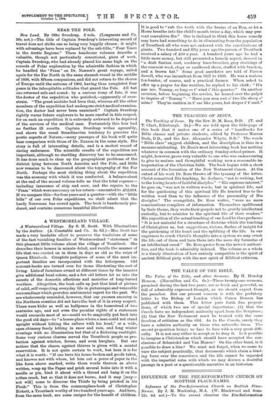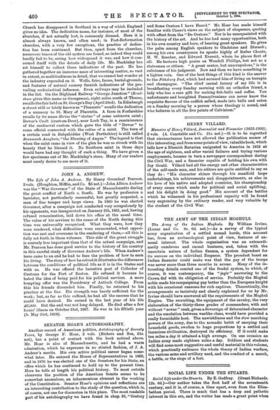INFLUENCE OF THE PRE-REFORMATION CHURCH ON SCOTTISH PLACE-NAMES.
Church has disappeared in Scotland in a way of which England gives no idea. The dedication name, for instance, of most of the churches, if not actually lost, is commonly disused. Here it is almost always known, and often used; in Post-Reformation churches, with a very few exceptions, the practice of dedica- tion has been continued. But then, apart from the churches, numerous traces of the old system are found, as indeed they could hardly fail to be, seeing how widespread it was, and how it con- cerned itself with the details of daily life. Mr. Mackinlay has set himself to collect these indications of the past. He has gathered together an immense mass of interesting matter, so vast in extent, so multitudinous in detail, that we cannot but wonder at the industry expended on it. Wells, fairs, farms, burial-grounds, and features of natural scenery furnish indications of the pre- vailing ecclesiastical influence. Even railways may be included in the list. On the Highland Railway "George Junction" (Brad- shaw gives this name as Georgemas), eight miles south of Thurso, recalls the fair held on St. George's Day (April 23rd). In Edinburgh a street still or lately known as "Pleasants" recalls the dedication of a nunnery to St. Mary of Placentia. A farm in Forfarshire recalls by its name Skrine the "shrine" of some unknown saint ; Dewar's Croft (crort-en-Deor), near Loch Tay, is a reminiscence of the mediaeval custom which gave the title of " Dewar " to some official connected with the cultus of a saint. The turn of a certain road in Balquhidder (West Perthshire) is still called Beannaich Aonghais," the Blessing of Angus." The legend is that when the saint came in view of the glen he was so struck with its beauty that he blessed it. No Southern saint in those days would have had any thought of such a thing. We have given a few specimens out of Mr. Mackinlay's store. Many of our readers must surely desire to see more of it.























































 Previous page
Previous page